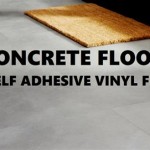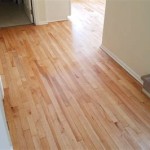Transitioning From Laminate To Strip Flooring: A Comprehensive Guide
Transitioning from laminate to strip flooring can transform the aesthetics and functionality of your home. Whether you're embarking on this project for aesthetic reasons or to elevate the value of your property, understanding the essential aspects of this transition is crucial for a successful outcome.
Selecting the Right Strip Flooring
The type of strip flooring you choose will significantly impact the overall look and feel of your space. Consider the following factors:
* Wood species: Each wood species offers unique characteristics in terms of grain patterns, durability, and color. Popular options include oak, maple, and cherry. * Finish: The finish protects the wood from wear and tear and influences its appearance. Common finishes include polyurethane, oil-based, and water-based. * Plank width: Narrower planks create a more traditional look, while wider planks add a contemporary vibe. Choose a width that complements the size of the room.Preparing the Subfloor
To ensure a stable and long-lasting installation, the subfloor must be properly prepared. This involves:
* Removing the laminate flooring: Carefully remove the existing laminate flooring using a pry bar or flooring removal tool. * Repairing subfloor imperfections: Fill any holes or cracks with a suitable patching compound and sand the surface smooth. * Installing underlayment: Place a moisture barrier and/or underlayment over the subfloor to provide cushioning and sound insulation.Installing Strip Flooring
The installation process for strip flooring varies depending on the type of subfloor and flooring you've chosen. Common methods include:
* Nail-down installation: Strip flooring is secured directly to the subfloor using nails or staples. * Floating installation: The planks interlock and float freely over the subfloor without being attached to it. * Glue-down installation: The planks are glued to the underlayment, providing a strong and durable bond.Transitioning to Other Flooring
If your strip flooring transitions into another type of flooring, such as tile or carpet, you'll need to install a transition strip. This creates a smooth and seamless connection between the two surfaces. There are different types of transition strips available, including T-moldings, reducers, and threshold strips.
Maintenance and Care
To maintain the beauty and longevity of your strip flooring, regular cleaning and maintenance are essential. Here are a few tips:
* Sweep or vacuum regularly: Remove dust and debris to prevent scratches. * Mop with a damp cloth: Use a mild cleaning solution specifically designed for wood floors. * Protect from excessive moisture: Wipe up spills immediately and avoid using abrasive cleaners. * Refinish periodically: Strip flooring can be refinished multiple times to restore its original beauty and protect it from wear and tear.
Floor Transition Strips Uneven High Quality Flooring Trims You Ll Love

Pro Tips And Tricks For Installing Laminate Flooring Vinyl Plank Diy

Flooring Transition Strips Moldings Trims Onflooring

Laying Laminate Flooring Installing Transition Strips

Flooring Transition Strips Moldings Trims Onflooring

When To Use Transition Strips On Your Floors Ina Flooring Services

How To Install Transition Strips In Doorways

Laminate Flooring Transition Strips Commercial Tarkett

Installing Transition Strips In A Basement Floor For Clean And Polished Finish Kyinbridges Com

Installing Laminate Transitions Step By Instructions
See Also







